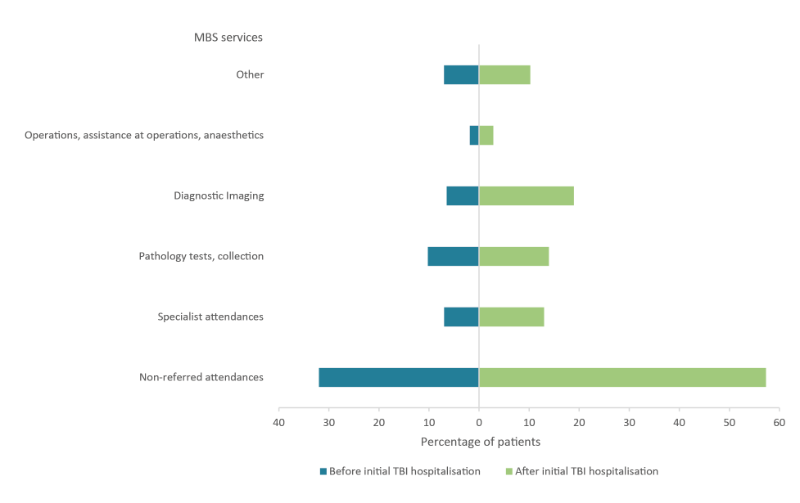MBS services
Definition of MBS services
The MBS provides a subsidy for services listed in the Australian Government Department of Health’s MBS, for all Australian residents and certain categories of visitors to Australia. The major elements of Medicare are contained in the Health Insurance Act 1973. See details of the services covered by the MBS.
Medicare benefits are claimable only for ‘clinically relevant’ services rendered by an appropriate health practitioner. A ‘clinically relevant’ service is one which is generally accepted by the relevant profession as necessary for the appropriate treatment of the patient.
In general, MBS statistics exclude services:
- provided to public admitted patients and public outpatients of public and private
- hospitals
- provided to patients in public Emergency Departments
- covered by the Department of Veterans’ Affairs National Treatment Account
- covered by an entitlement conferred by legislation other than the Health Insurance Act.
- (e.g. services covered by third party or workers’ compensation)
- covered by other publicly funded programs.
The number of patients accessing MBS services rose from 38% of the cohort in the month before initial TBI hospitalisation to 65% of patients in the month after hospitalisation (Figure 21; Table S16). Across the two years before and after hospitalisation, the percentage of the cohort accessing MBS services was 34% 24 months before the initial TBI hospitalisation and 39% in the 24 months after. After hospitalisation, the percentage of the cohort accessing MBS services decreased from 65% one month later to 39% 24 months later.
Figure 21: Percentage of cohort patients accessing MBS services in the 24 months before and after initial TBI hospitalisation

Notes:
1. After % of cohort patients is based on number of patients still alive after initial TBI hospitalisation.
2. Excludes items that denote bulk-billing used, and pathology initiation items, to reduce double counting of items.
Source: AIHW NIHSI AA v0.5.
Looking more closely at the first month either side of the initial TBI hospitalisation, the percentage of patients accessing diagnostic imaging services almost tripled from 6.5% to 19% between the month before and the month after the initial TBI hospitalisation (Figure 22; Table S16). Specialist attendance nearly doubled, from 7.0% of patients in the month before hospitalisation to 13% in the month after, and the most frequently accessed service – non-referred attendances, such as GP and allied health services – increased from 32% of patients to 57% of patients.
Figure 22: Percentage of cohort patients accessing MBS services in the month before and after initial TBI hospitalisation, by type of MBS service

Notes:
- Excludes items that denote bulk-billing used, and pathology initiation items, to reduce double counting of items.
- Type of service is based on the MBS Broad types of service, as follows: 'Non-referred attendances' includes: Non-referred attendances GP/VR GP, Non-referred attendances–Enhanced Primary Care, Non-referred attendances–Other; 'Pathology tests, collection' includes: Pathology Tests and Pathology Collection Items; 'Operations, assistance at operations, anaesthetics' includes: Operations, Anaesthetics and Assistance at operations; 'Other' includes: Other Allied Health, Optometry, Obstetrics, Practice Nurse, Radiotherapy and Therapeutic Nuclear Medicine and Other MBS services.
- After % cohort is based on number of patients still alive after initial TBI hospitalisation.
Source: AIHW NIHSI AA v0.5.


